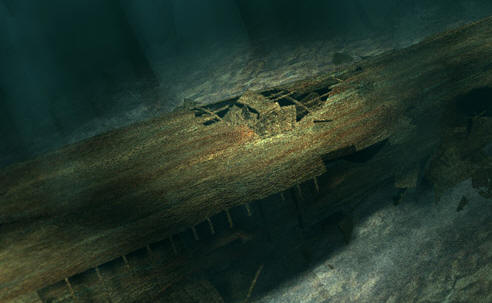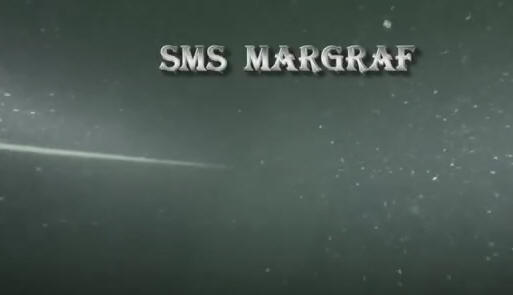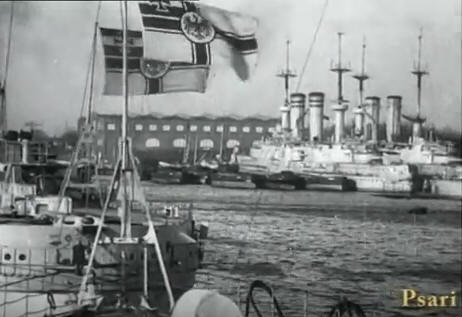SMS Margraf
N58 52.969 W003 08.526
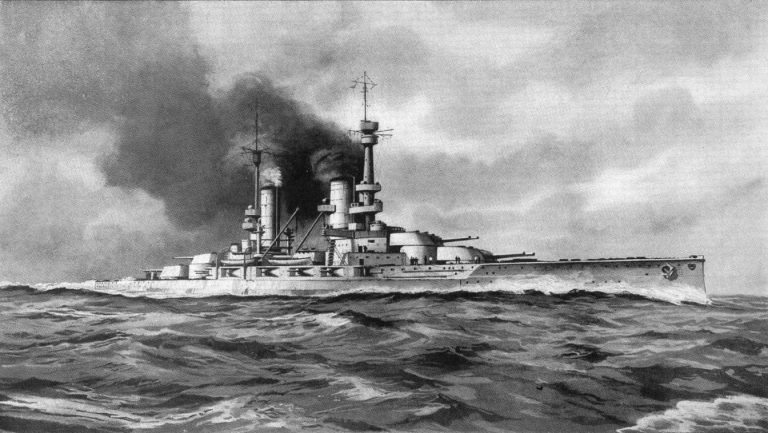
SMS Margraf was a world war 1 German battleship of the Konig class. The painting above shows what a konig class would have looked like. She took three years to build and was commissioned into the German Imperial Navy on 1st October 1914. She spent the first two months on sea trials in the Baltic before being joining III Battle Squadron of the High Seas Fleet with her three sister ships, König, Grosser Kurfürst, and Kronprinz. They were next asked to support the mine laying activities of Texel before taking part in most of the fleet action during the war including the famous battle of “Jutland” where she was damaged. Markgraf also participated in Operation Albion, the conquest of the Gulf of Riga, in late 1917. The ship was damaged by a mine while en route to Germany following the successful conclusion of the operation.
After the German defeat in world war one an armistice was signed in November 1918 and most of the capital ships including the Margraf , were interned in the Royal Naval base in Scapa Flow in the Orkney islands.
All of the ships were disarmed and were run by skeleton crews. On 21 June 1919, days before the Treaty of Versailles was signed, the commander of the interned fleet, Rear Admiral Ludwig von Reuter, ordered the fleet to be scuttled to ensure that the British would not be able to seize the ships. Unlike most of the scuttled ships, Markgraf was never raised for scrapping; the wreck is still sitting on the bottom of the bay. The following are details of the ship:
Nationality | German |
Builder | AG Wesser, Bremen |
Construction Number | 186 |
Type | Konig Class Battleship |
Displacement | 29669 tons loaded |
Length | 146m |
Beam | 28m |
Draught | 8.5m |
Power | 43300 shp |
Propulsion | 3 oil fired & 12 coal fired boilers with three sets of Parsons turbines driving three propellers |
Range | 8000 nm |
Speed | 21 kts |
Armaments | 10×30.5cm guns in 5 twin turrets. 14x15cm casemate guns fitted with 10×8.8cm aircraft guns. 5x50cm submerged torpedo tubes. |
Crew | 1136 |
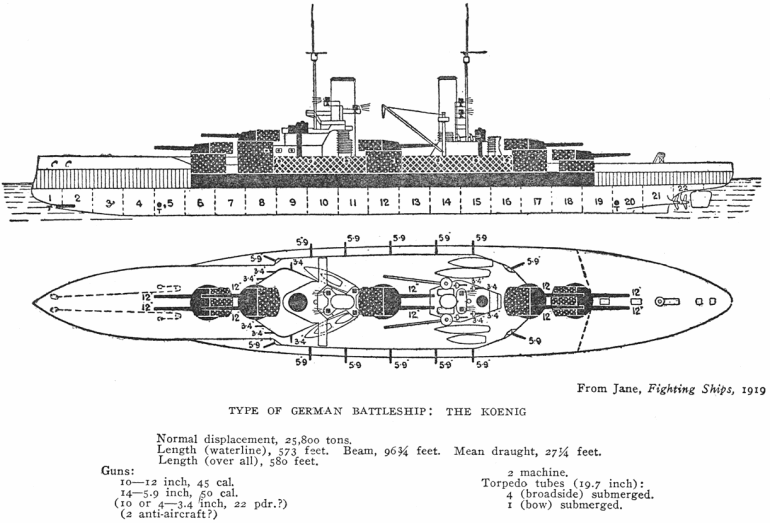
Today the Margraf lay on the seabed, almost upside down in 45m. There are some holes in the hull created by early salvage attempts.
Steve Clarkson in the Margraf’s Galley next to the engine room in the 1970s – Photo John Astley
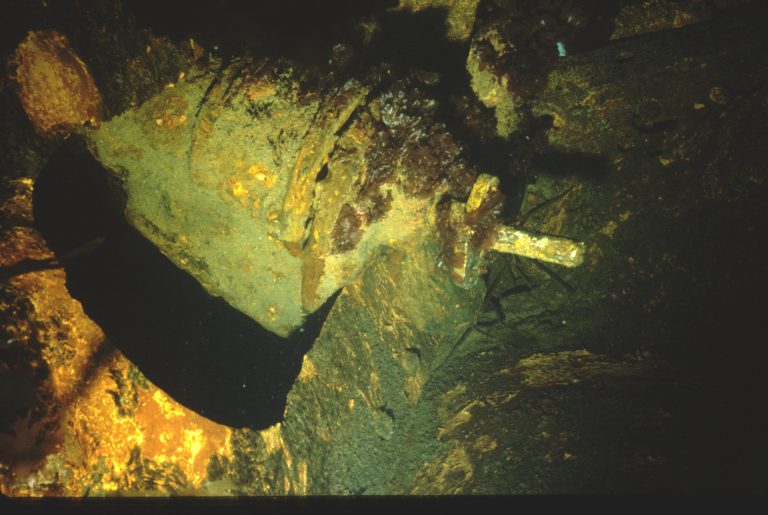
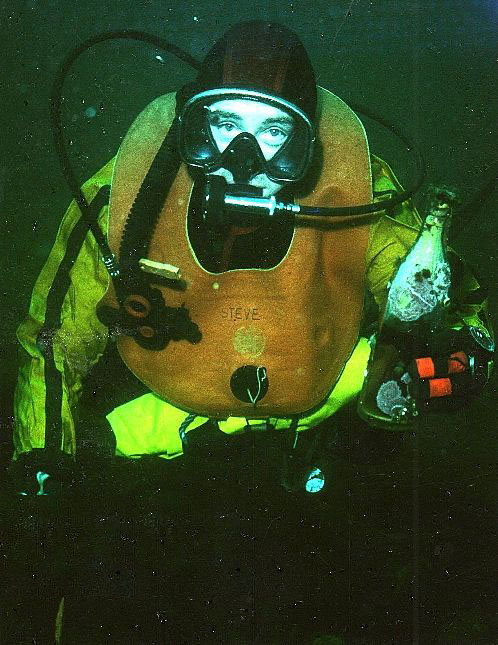
Lorem ipsum dolor sit amet, consectetur adipiscing elit. Ut elit tellus, luctus nec ullamcorper mattis, pulvinar dapibus leo.
